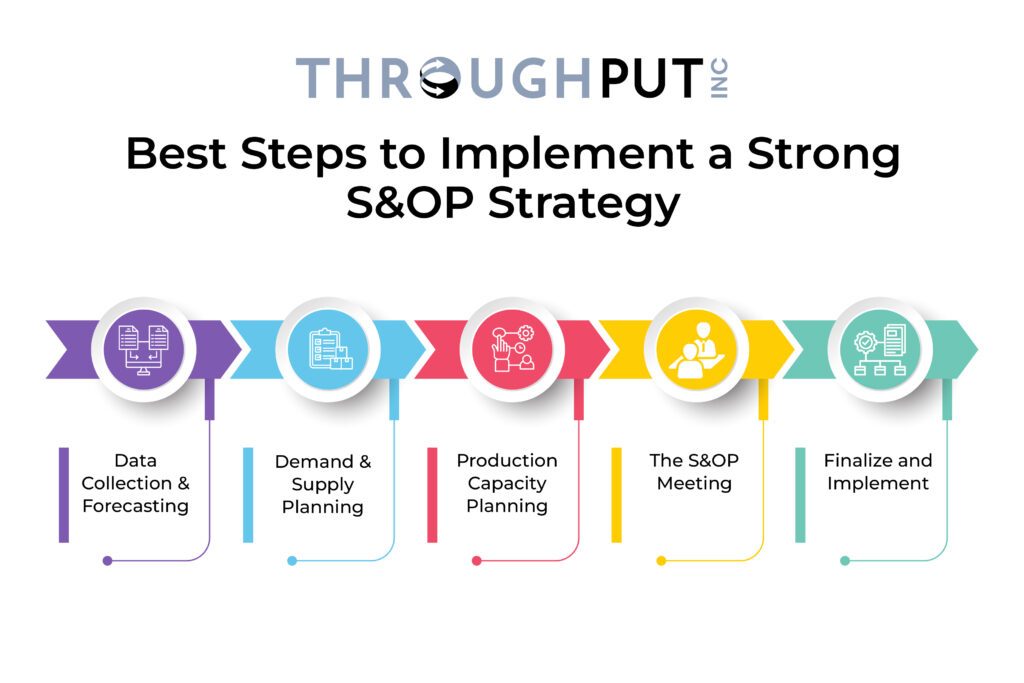Are you looking at quickly optimizing your Sales and Operations Planning (S&OP) process to start reaping benefits?
Not sure how to get started with implementing one for your business?
Unable to keep up with the market volatility which is hindering your S&OP efforts?
With today’s rampant supply-demand imbalances, most supply chain planners are finding it tough to match the volatile demand vs aggressive supply variables.
Let’s admit it.
With today’s fast moving markets, agility, responsiveness and adaptability are the key qualities most companies need to have to meet desired supply chain goals.
Implementing a sound S&OP process could be the best bet to overcome this gap between the plan and reality. This not only allows for an efficient end-to-end integrated supply chain strategy which is aligned with the sales and financial priorities, it also helps minimize unnecessary costs in the process.
With competition striking it tough and multiple product lines to showcase to your customers, how do you get and maintain a competitive edge over the others in the global market? This is where an effective S&OP process can save the day.
S&OP software helps you keep a close eye on financial and business impact, prompting better decisions across teams through carefully planned strategies.
By implementing an optimized S&OP supply planners can easily focus on the existing set of resources to meet customer’s needs while maintaining the profitability needed for growth.
The Core of a Robust Sales and Operations Planning Process
Most small companies with few key business processes may not necessarily need a full-fledged S&OP setup but as these businesses expand and business functions multiply, a sound S&OP becomes imperative for healthy growth.
This not only helps assess whether the overall staffing levels are adequately performing, it also helps set short and long term performance goals and evaluate if all sales territories are functioning as per expectations. It also helps understand resource planning needs, budgets allocated for new priorities and resource constraints if any.
Since implementing a successful S&OP strategy relies heavily on the availability of accurate data and its analysis, it is important to have the right platform and a customized technology solution which helps translate this data into actionable insights.
Artificial intelligence powered insights can be of immense value here, as this cognitive technology can crawl enterprise applications in real-time, and apply AI and ML algorithms to extract insights.
This has a clear benefit for S&OP managers by removing the ambiguity in aggregating information and providing a clear sense of direction to move forward.
5 Steps to Implement a Strong Sales and Operation Planning Strategy

1. Data Collection & Forecasting
The first step is probably the most direct one but very critical as this sets the direction of the entire S&OP process. Gathering key data points and forecasting based on industry and past trends. This gives the trajectory for the future along with any internal and external factors which could impact future sales are also considered.
2. Demand & Supply Planning
A good sync between multiple departments is what is needed for this step. This cross-functional collaboration between demand and supply planners, operations managers, marketing experts etc. helps match the data which has been consolidated from the previous step.
The forecasts are analyzed and necessary changes are made based on the product demand. Supply planning involves capacity evaluation to check for any constraints on resources based on which an appropriate plan is presented.
3. Production Capacity Planning
The executive team next evaluates existing supply chain variables, their impact on the expected future capacity needs and the production plan.
Using data on existing resources such as equipment, manpower, service personnel etc. a detailed plan to meet forecasted numbers is prepared and evaluated to look for gaps if any.
4. The S&OP Meeting
A cross-functional collaboration to assess the financial impact of the projected demand and supply plan. A detailed viable sales and operations plan is next created using inputs from this meeting to assess the final course of action with key financial aspects being considered.
5. Finalize and Implement
Once the course of the way forward has been agreed upon by all key stakeholders, the S&OP strategy is implemented. On implementation, this is further evaluated periodically to include feedback, changes and possible recommendations for improvement.
Get your S&OP on track with ThroughPut’s AI
It’s no surprise that Artificial Intelligence (AI) is transforming the business world for good. Most business leaders are following an AI-first strategy to empower decision-making in their organizations.
For consistency in your sales forecast data to plan the right level of production and match capacity accurately, AI in S&OP seems to be the most viable option to create future-proof S&OP processes.
Along with faster routine decision-making and less labor time being dedicated to finding and sorting data, AI can go a long way in reducing understocking and overstocking problems with precise forecasting.
ThroughPut’s AI solution introduces you to a new world of data-driven decision-making while simplifying your S&OP processes. With ThroughPut you can accurately evaluate and correlate demand insights and quickly respond to market changes, fluctuating margins, and inventory emergencies.


